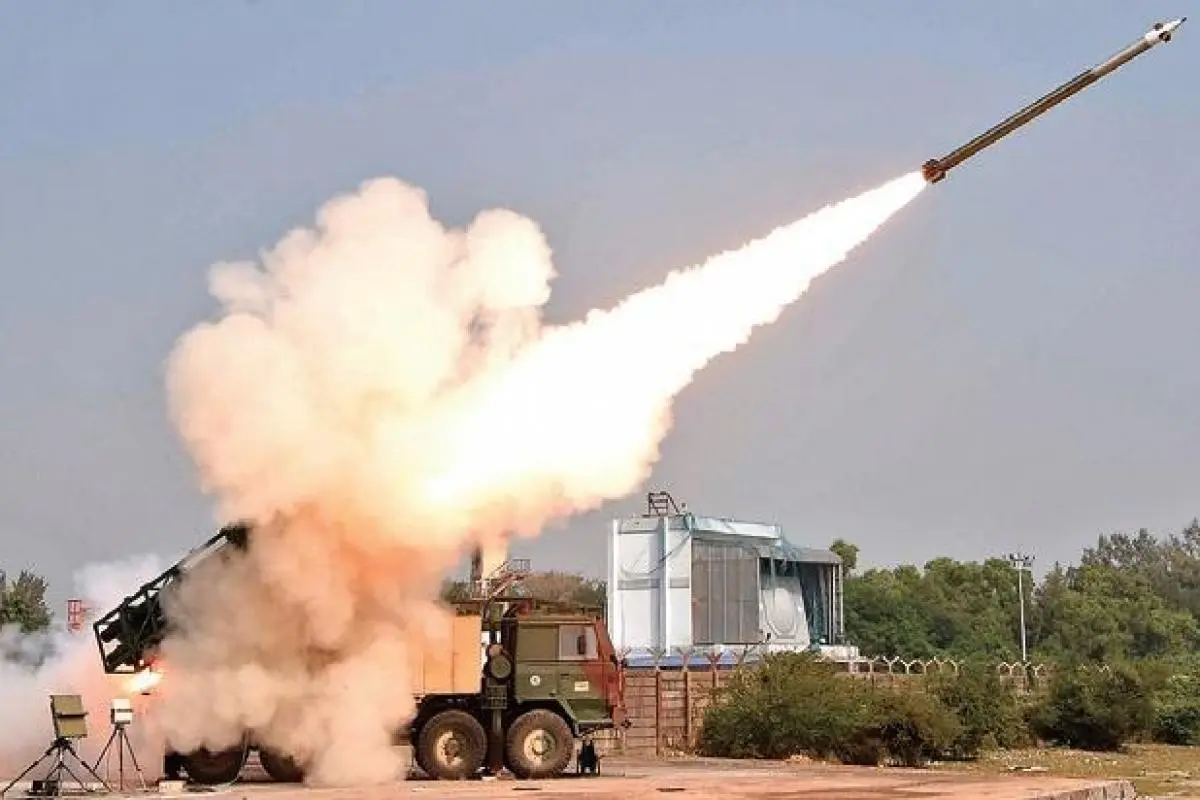Important Facts For Prelims
Enhanced Pinaka Mk-I Rocket System
- 11 Apr 2022
- 5 min read
Why in News?
The Enhanced Pinaka Mk-I Rocket System (EPRS) was successfully test fired in the Pokhran range in Rajasthan.
- As part of the same set of trials, the Area Denial Munition (ADM) was also successfully tested.
- The tests also validated the performance of different variants of munitions and fuzes that can be used in the Pinaka rocket system.
- ADMs are a category of ammunition used to prohibit the adversary from occupying or passing through a particular area.
What is EPRS?
- The EPRS is the upgraded version of the Pinaka variant that has been in service with the Indian Army for the last decade.

- The design and development has been carried out by Pune-based DRDO (Defence Research and Development Organisation) laboratories - Armament Research and Development Establishment (ARDE) and High Energy Materials Research Laboratory (HEMRL).
- The upgrades include advanced technologies enhancing the range to meet the emerging requirements of the battlefield.
- While the Mark-1 has a range of 38 km, the enhanced version of Mark-1 tested in the last fortnight has a range of 45 km with some key additional features.
- The new incarnation of pinaka represents one of the few examples of an evolutionary process being followed with an indigenous Indian weapon system.
What is Pinaka?
- About:
- The Pinaka rocket system is a multi-barrel rocket system, which is named after Lord Shiva’s bow.
- It is developed by Pune-based Armament Research and Development Establishment (ARDE) and High Energy Materials Research Laboratory (HEMRL).
- The development of the Pinaka was started by the DRDO in the late 1980s as an alternative to the Multi Barrel Rocket Launcher systems of Russian make called the ‘Grad’, which are still in use by some regiments.
- After successful tests of Pinaka Mark-1 in late 1990, it was first used in the battlefield during the Kargil war of 1999, quite successfully. Subsequently, multiple regiments of the system came up in the 2000s.
- The Pinaka rocket system is a multi-barrel rocket system, which is named after Lord Shiva’s bow.
- Features:
- It can fire a salvo of 12 rockets over a period of 44 seconds.
- One battery of the Pinaka system consists of six launch vehicles, accompanied by loader systems, radar and links with network-based systems and a command post. One battery can neutralise an area of 1 km by 1 km.
- As a key tactic of long-range artillery battle, the launchers have to ‘shoot and scoot’ to ensure they themselves do not become the targets, especially being detectable due to its back blast.
- Multiple Variants:
- DRDO has also developed and successfully tested the Mk-II and guided variants of the Pinaka, which has a range of around 60 km, while the Guided Pinaka system has a range of 75 km and has integrated navigation, control and guidance system to improve the end accuracy and enhance the range.
- The navigation system of the Guided Pinaka missile is also aided by the Indian Regional Navigation Satellite System (IRNSS).
UPSC Civil Services Examination, Previous Year Questions (PYQs)
Q. What is “Terminal High Altitude Area Defence (THAAD)”, sometimes seen in the news? (2018)
(a) An Israeli radar system
(b) India’s indigenous anti-missile programme
(c) An American anti-missile system
(d) A defence collaboration between Japan and South Korea.
Ans: (c)
- Terminal High Altitude Area Defence (THAAD) is an American anti-missile system designed to intercept and destroy short and medium-range ballistic missiles during their “terminal” phase of flight when they are falling towards the target.




